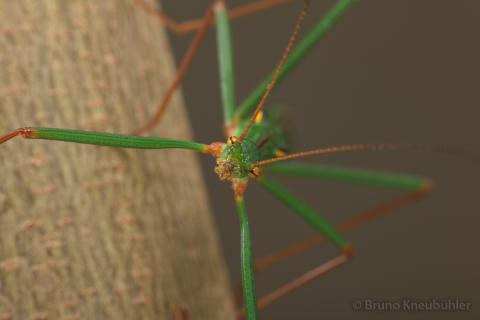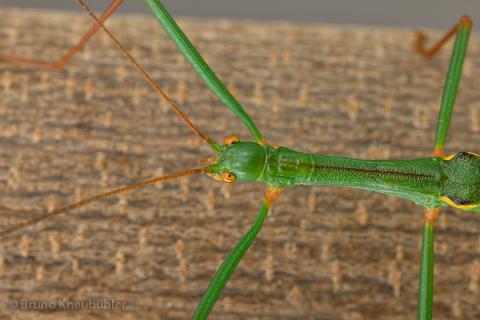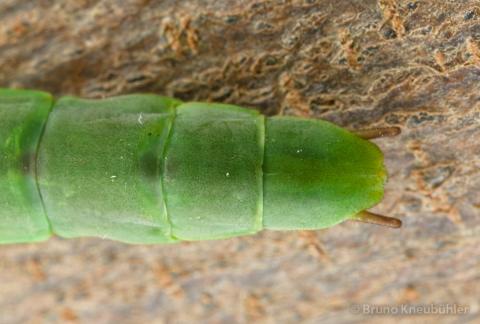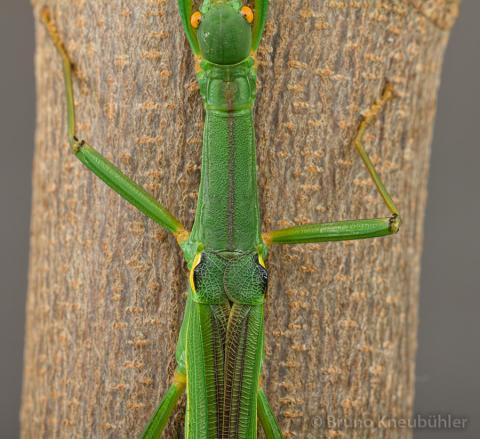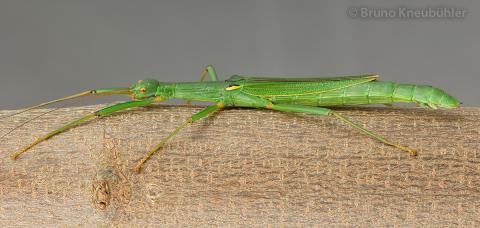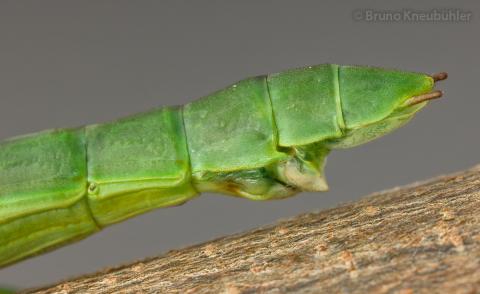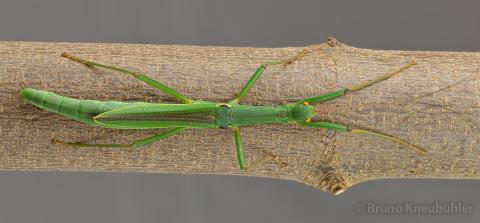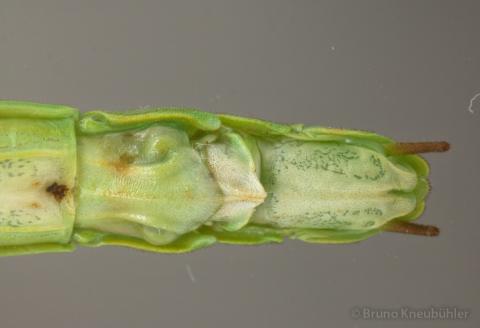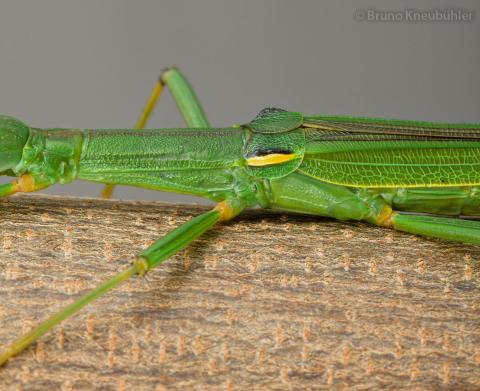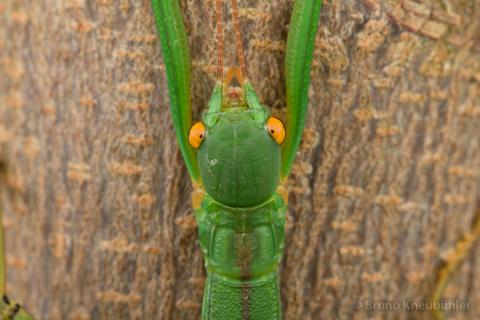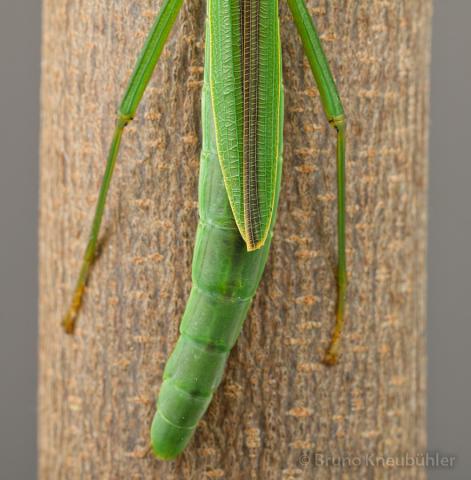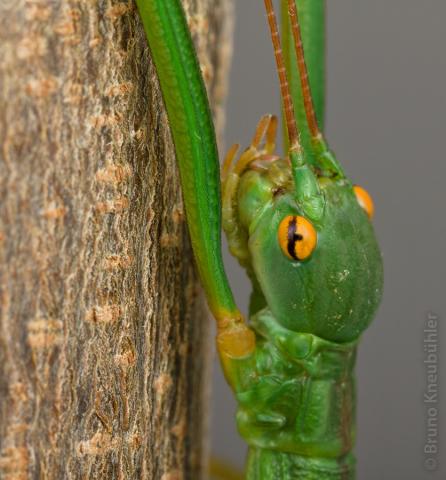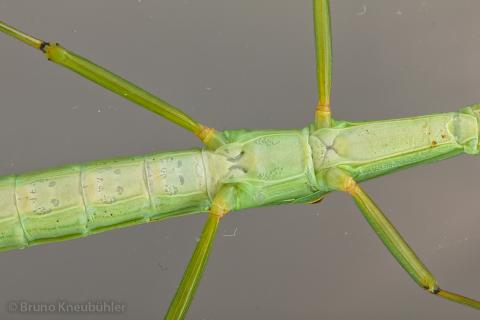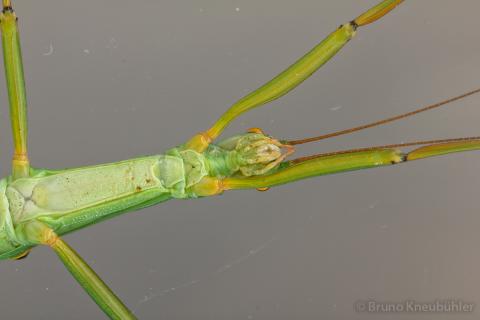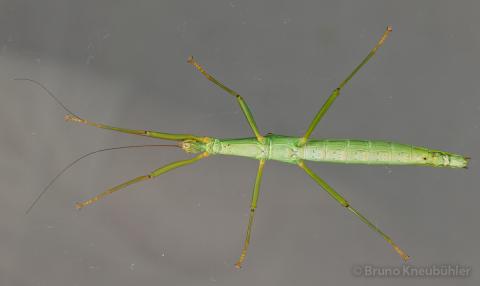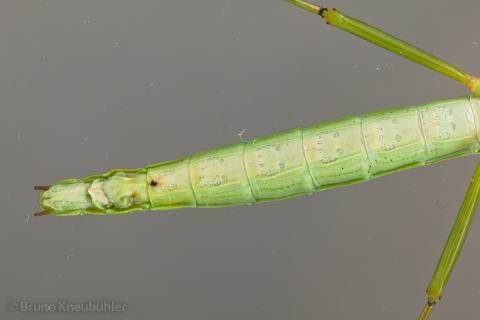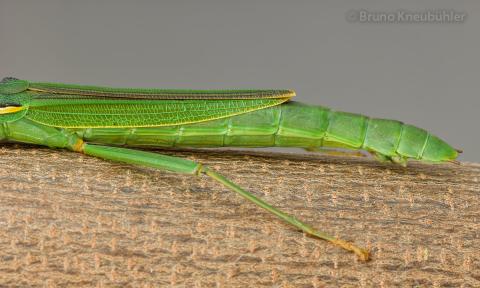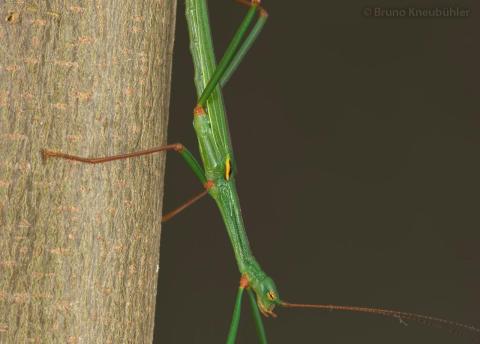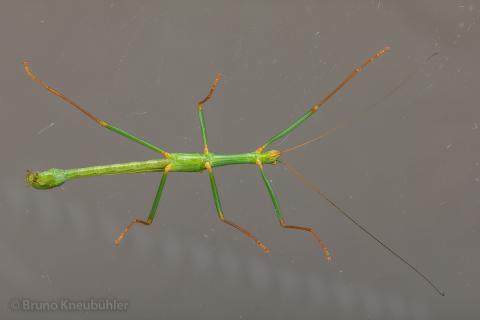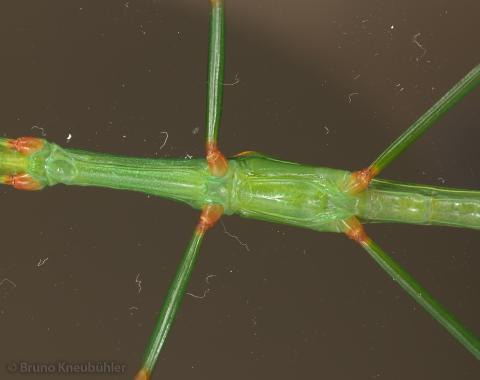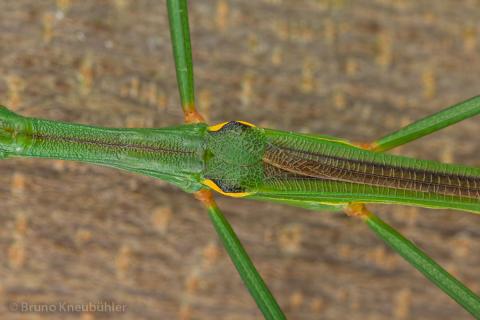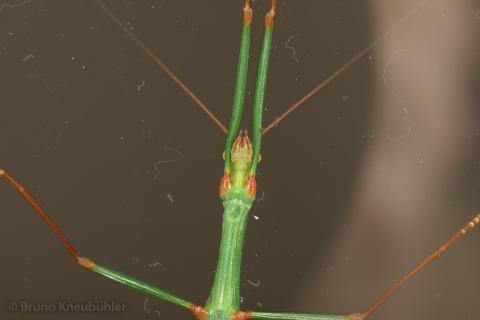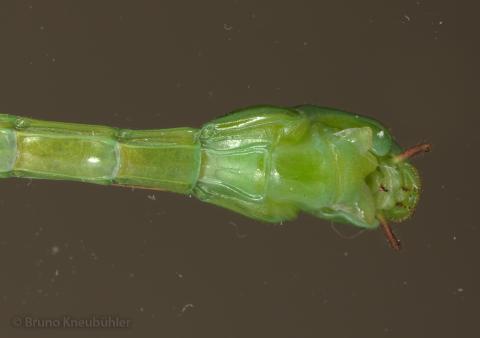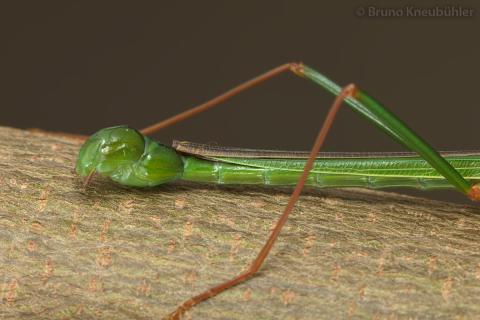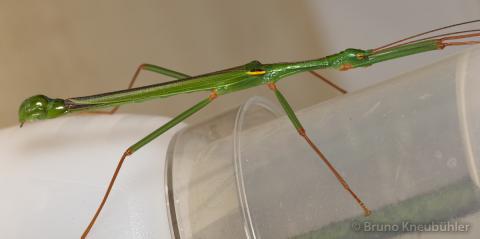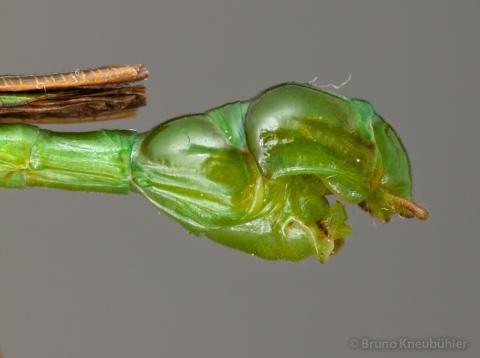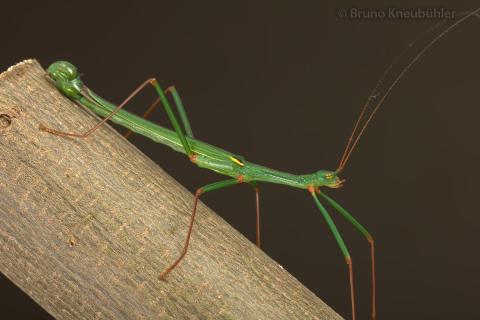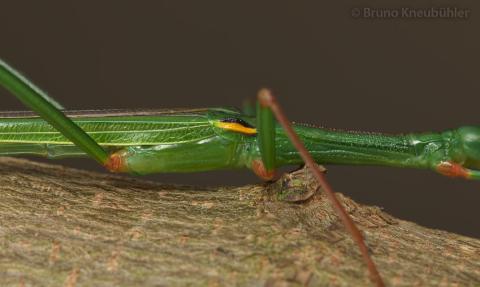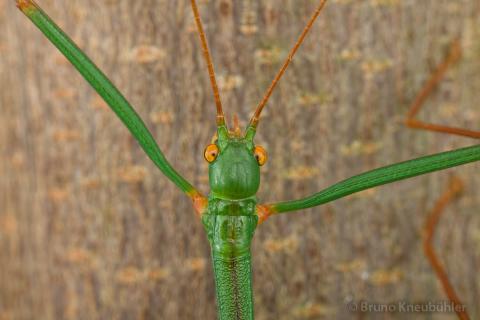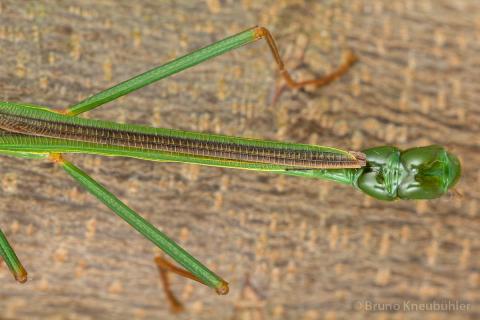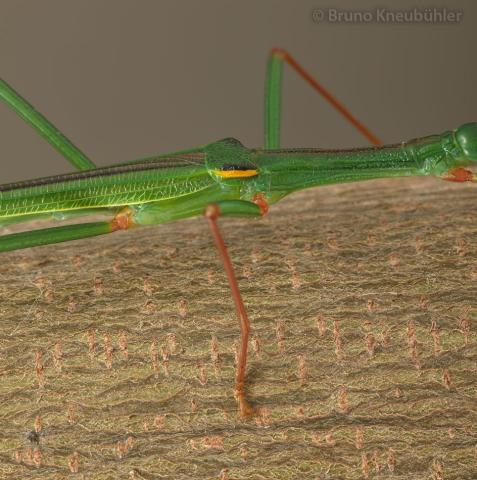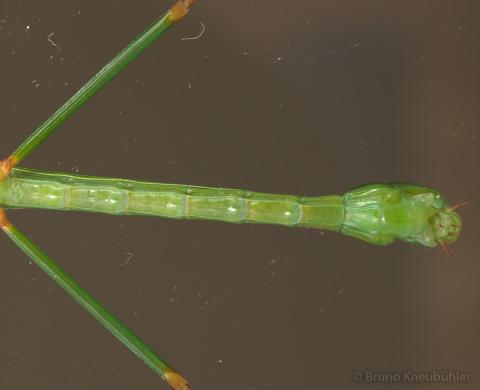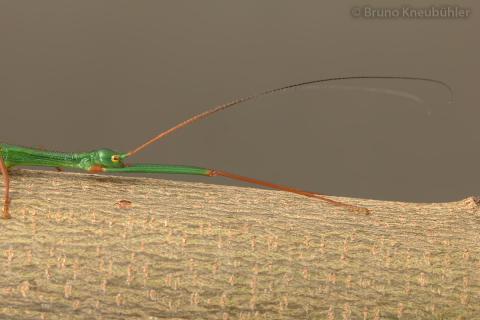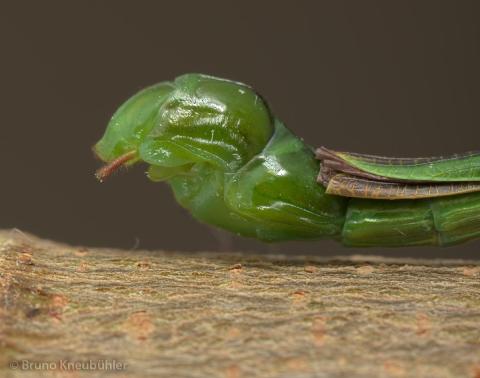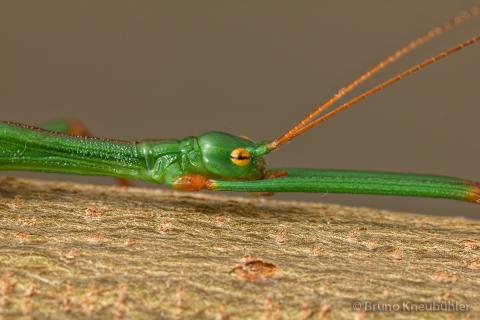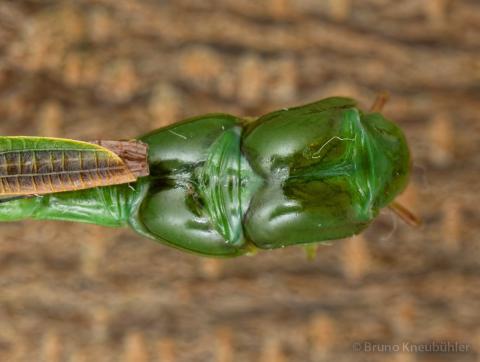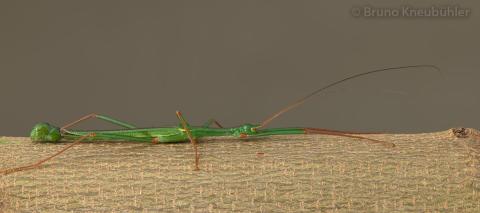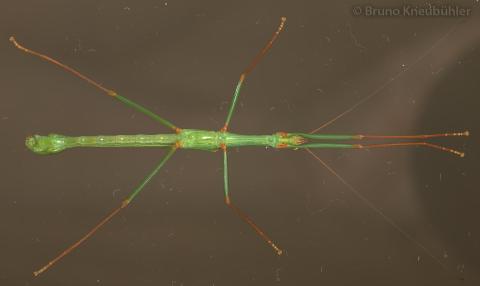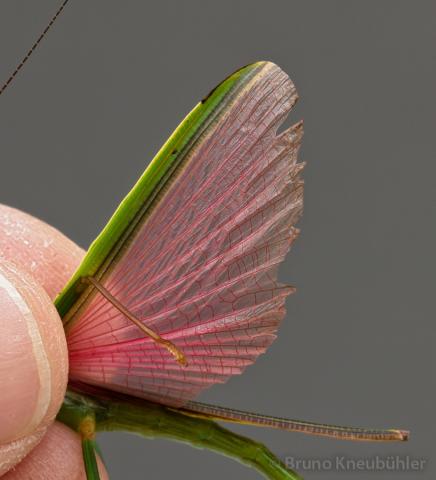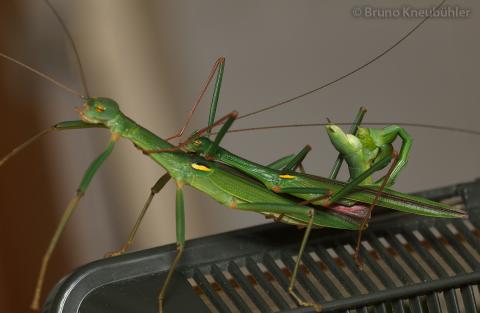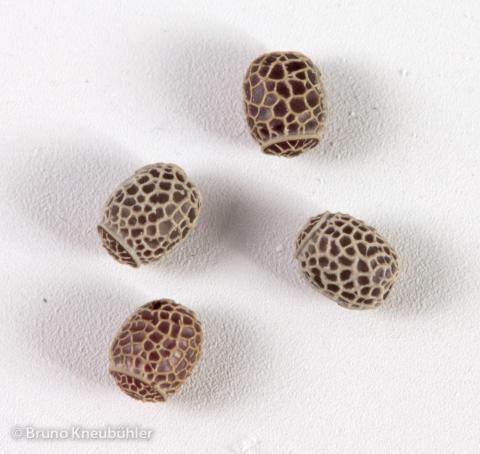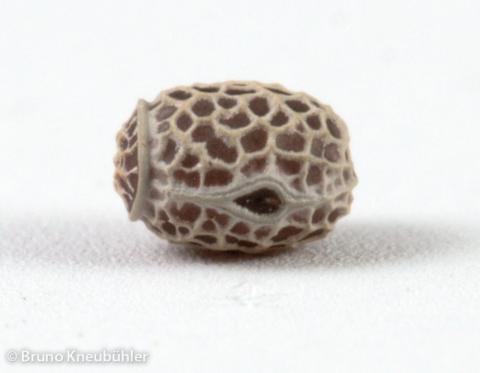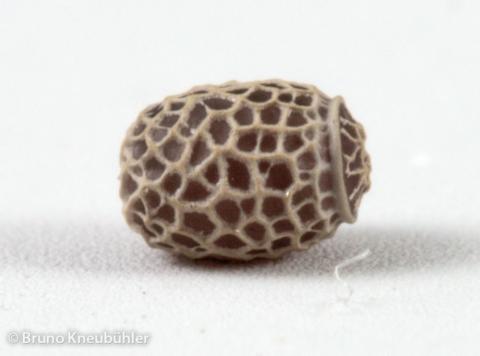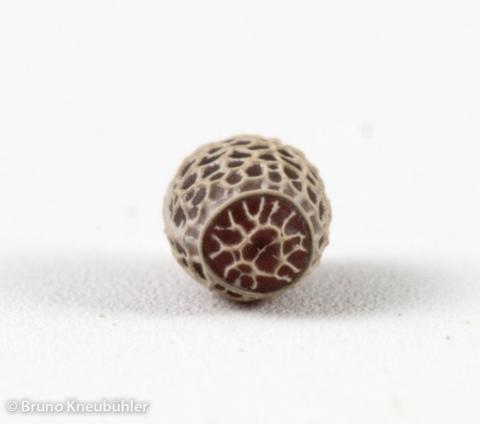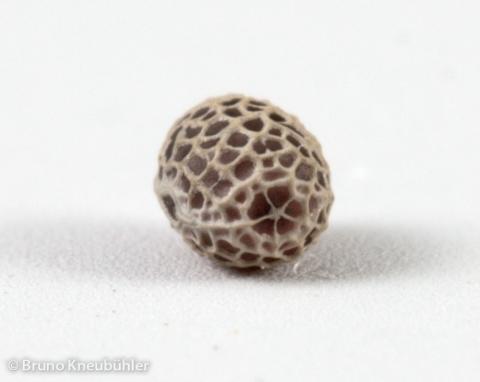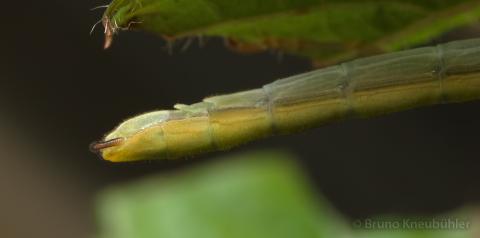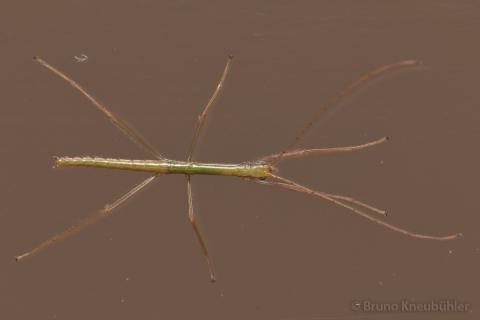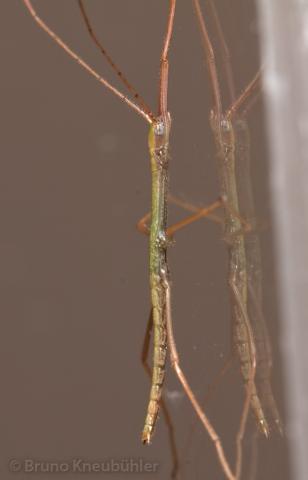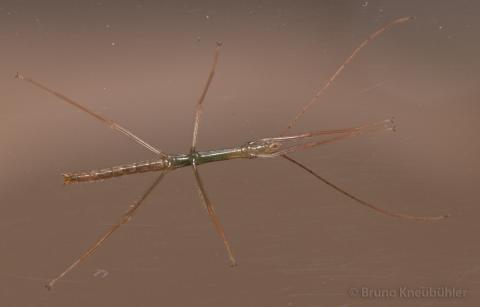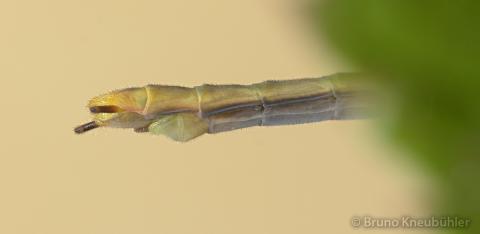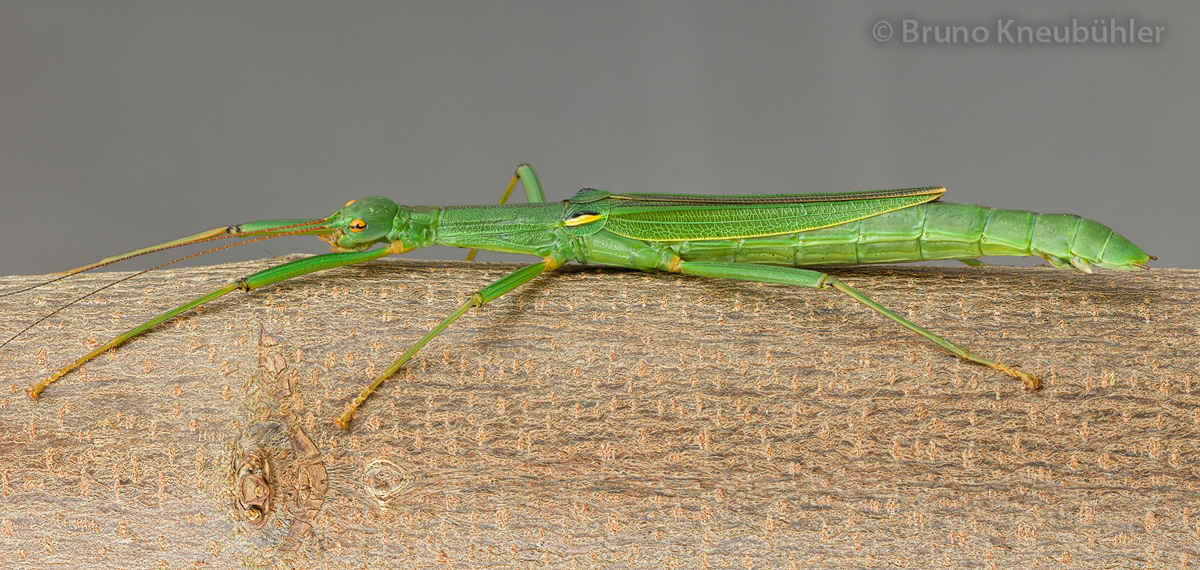
Genus
Species
Stock
CLP
638
PSG
351
Culture status
Probably lost
Foodplants
Bramble (Rubus spp.)
Oak (Quercus robur)
Breeding notes
(by Bruno Kneubuehler)
General Notes
- 2012 – taxonomical aspects of this species are being examined by
Joachim Bresseel (Belgium), and he will also describe this species - 2012 – first successful culture by Bruno Kneubühler (Switzerland)
- 2012 – this species has been distributed as Sinophasma vietnamense "Tam
Dao"
_________________
Origin
- Tam Dao National Parc, Vietnam
_________________
Females
- beautiful and agile phasmids
- about 6.5 – 7.5 cm long
- coloration is rather consistant between amongst females (F1)
- upper body side is strongly green, with some dark brown stripes and areas
- lower body side light green
- eyes yellow
- antennae brown and longer than the forelegs
- antennae longer than forelegs
- well devleoped wings
- yellow or white area on each forewing (tegmina)
- membranous part of hindwings (alae) is light pink, with dark pink veins
- praeopercular organ (the structure at the ventral end of the 7th abdominal segment, which serves as an anchorage for the male during mating) is well developed
_________________
Males
- very beautiful and very agile phasmids
- coloration is rather consistent amongst males (F1) and similar like the females
- body coloration is a strong, glossy green, with some dark brown stripes and areas
- eyes yellow-brown
- antennae, leg joints and lower legs are orange-brown
- antennae longer than forelegs
- very well developed wings
- yellow or white area on each forewing (tegmina)
- membranous part of hindwings (alae) is light pink, with dark pink veins
_________________
Nymphs
- about 10 mm (L1)
- body green-brown (L1)
- legs brown and hairy (L1)
- antennae brown with dark rings and a dark tip (L1)
- antennae longer than forelegs
- by L3 it is quite easy to draw a distinction between ♀♂ (by the naked eye)
_________________
Eggs
- very small
- about 1 x 1.5 mm
- dark brown with a light net-like stucture
- elongate-oval
- matt
- no distinct capitulum present on the eggs lid (operculum)
- micropylar plate dark brown, small and drop-like
_________________
Food Plants
- bramble (Rubus sp.) - with oak juice coating
is well accepted by freshly hatched nymphs and older nymphs. More about the Coating Method ... - bramble (Rubus sp.) - without oak juice coating
after 2 – 3 weeks, the nymphs did accept bramble leaves without a coating easily. These nymphs have also fed as adults well on bramble - oak (Quecus sp.)
is well accepted by adults (not yet tested on nymphs, but I assume that nymphs feed on oak too)
_________________
Behaviour
- especially small nymphs are very quick and they can behave quite frantically when being touched
- adults can be quite trusting and they are often active during the day
- males fly very well, whereas females have never been seen flying
- this species has an interesting mating behaviour, very similar like Micadina sp. „Cuc Phuong“ (a closely related species). Matings lasts for just a few minutes only - and then the female kicks the male off. Here is a video of the mating behaviour of Micadina sp. „Cuc Phuong“:
Micadina mating behaviour (Youtube)
_________________
Developement
- incubation time (HH-incubation on dry sand at 20 - 23 °C) is about 5 – 5.5 months (F1)
- spread some dried (!) moss over the eggs - this will make it much easier for the nymphs to hatch unscathed and it also reduces mould growth to some extend
- hatching ratio in F1 was very high (> 50%)
- males will be adult after about 2.5 months (at 20 – 23°C), females after about 3 months
- females start laying eggs after about 2 – 3 weeks
- eggs are flinged away with a swing of the abodmen and fall to the ground
- about 60 – 80 eggs per female and week
- adults can live for several months
_________________
Breeding Notes
- my general notes on how to breed phasmids are a integral part of this care sheet ...
- it is quite easy to breed this species, if the food plants (e.g. oak juice for coating) are available
- keep the nymphs in a cage with good ventilation, but take care that the humidity does not drop too low
- a constantly wet paper towel on the floor of the cage helps raising humidity
- a humidity level of about 60 – 65 % rH seems to be sufficient, a higher humidity is also ok
- nymphs can be kept in a Faunabox (or similar cages)
- move nymphs to a bigger cage as they grow bigger
- a cage of about 30 x 30 x 30 cm is big enough for 4 – 5 couples of this species (or considerably larger if the cage also contains other species !)
- generally I advise to keep different phasmid species seperately (unfortunately, overcrowed cages are still very common ...)
- I have never sprayed nymphs or adults (or their cage) with water
- make shure that nymphs, which are about to undergo their adult moult, do not find places in the cage which would not offer them enough space beneath to moult successfully
